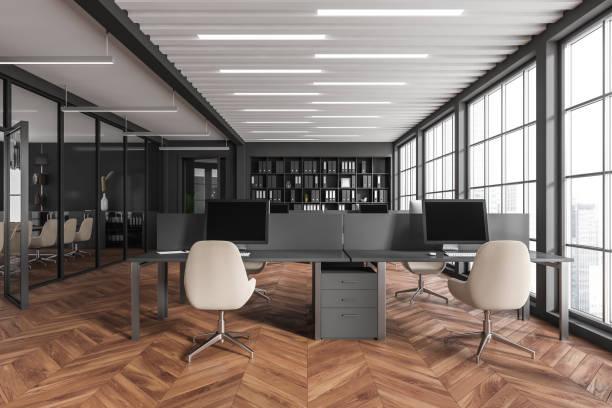In the modern workplace, efficiency is not just a desirable trait; it’s a necessity. With the rapid pace of technological advancements and the evolving nature of work itself, businesses are constantly seeking ways to optimize their workflows. One area that has seen significant innovation in recent years is office furniture, particularly smart office tables. These tables are revolutionizing the workplace by integrating technology seamlessly into the workspace environment, thereby enhancing productivity and workflow like never before.
Gone are the days when office tables were merely static pieces of furniture. Today, smart office tables are equipped with a myriad of features designed to streamline tasks and facilitate collaboration. From integrated power outlets and wireless charging pads to built-in monitors and adjustable height settings, these tables are redefining what it means to work efficiently.
One of the key benefits of smart office table design ideas is their ability to adapt to the diverse needs of modern workers. With adjustable height settings, employees can easily switch between sitting and standing positions, promoting better posture and reducing the risk of health issues associated with prolonged sitting. This flexibility not only enhances comfort but also boosts productivity by allowing employees to work in the position that best suits their preferences and workflow.
Moreover, smart office tables are equipped with advanced connectivity features that enable seamless integration with other devices and software platforms. Whether it’s syncing with a smartphone or connecting to a cloud-based collaboration tool, these tables ensure that employees can stay connected and collaborate effectively regardless of their location. This level of connectivity not only fosters teamwork but also eliminates the barriers to communication and information sharing, thereby accelerating decision-making and problem-solving processes.
Another noteworthy feature of smart office tables is their ability to enhance presentation capabilities. With built-in monitors and touchscreen displays, these tables serve as interactive hubs for meetings and presentations. Whether it’s showcasing slideshows, brainstorming ideas on a digital whiteboard, or sharing documents in real-time, these tables empower presenters to deliver engaging and impactful presentations without the need for additional equipment or setup.
Furthermore, smart office tables are designed with sustainability in mind. Many of these tables are made from eco-friendly materials and are built to last, reducing the environmental impact associated with traditional office furniture. Additionally, features such as energy-efficient LED lighting and sensors that automatically adjust settings based on occupancy help minimize energy consumption and promote a greener workplace.
In addition to their functionality and sustainability, smart office tables also offer a sleek and modern aesthetic that complements contemporary office spaces. With clean lines, minimalist design, and customizable finishes, these tables add a touch of sophistication to any workspace, enhancing the overall ambiance and fostering a more inspiring and productive work environment.
However, despite their numerous benefits, the adoption of smart office table design is not without its challenges. One of the main concerns for businesses is the initial cost associated with investing in these advanced furniture solutions. While the upfront investment may seem significant, the long-term benefits in terms of improved productivity, employee satisfaction, and cost savings often outweigh the initial expenditure.
Moreover, there may be resistance to change from employees who are accustomed to traditional office furniture. To address this challenge, businesses can implement comprehensive training programs and provide ongoing support to help employees familiarize themselves with the features and functionality of smart office tables. By emphasizing the benefits and demonstrating how these tables can enhance their workflow and productivity, businesses can overcome resistance and facilitate a smooth transition to the new workspace environment.
In conclusion, smart office tables represent a paradigm shift in workplace design and functionality. By integrating technology, flexibility, connectivity, and sustainability into the workspace environment, these tables are redefining efficiency and enhancing workflow like never before. As businesses continue to adapt to the evolving needs of the modern workforce, smart office tables will play an increasingly crucial role in shaping the future of work and driving innovation in the workplace.


















